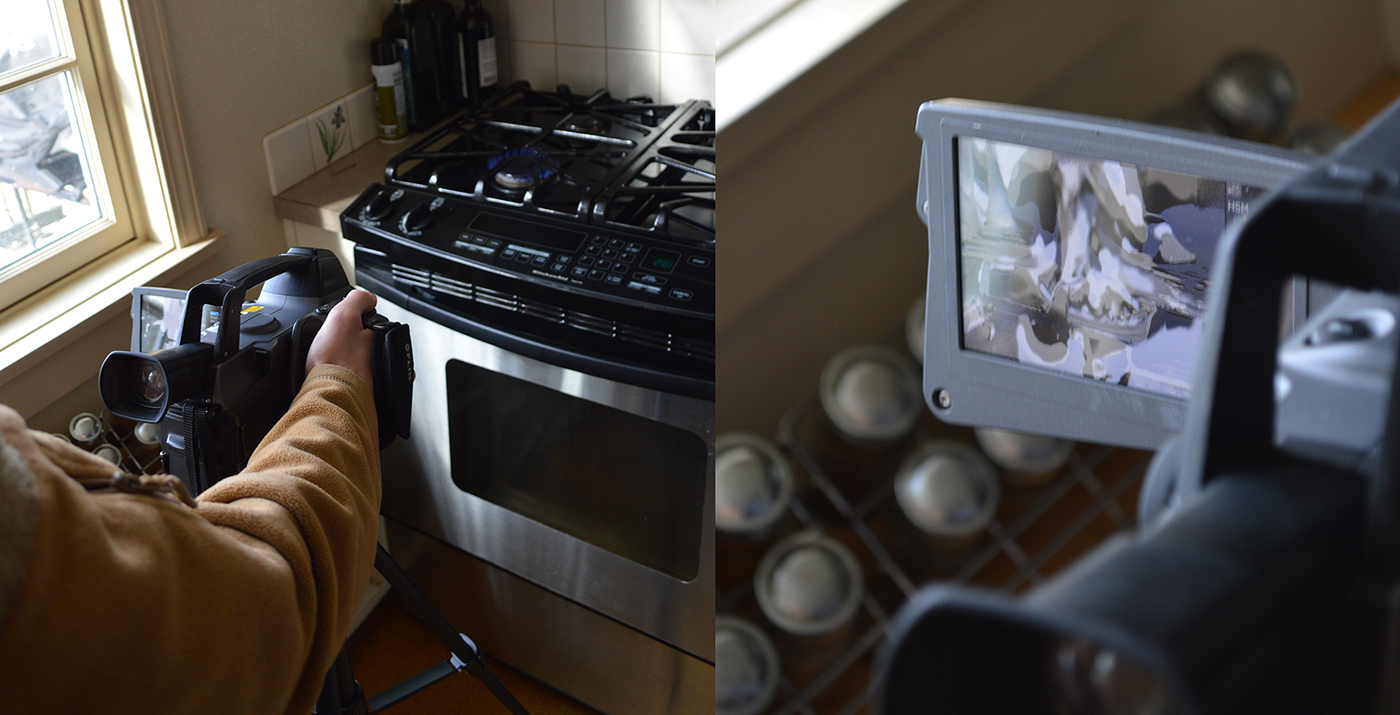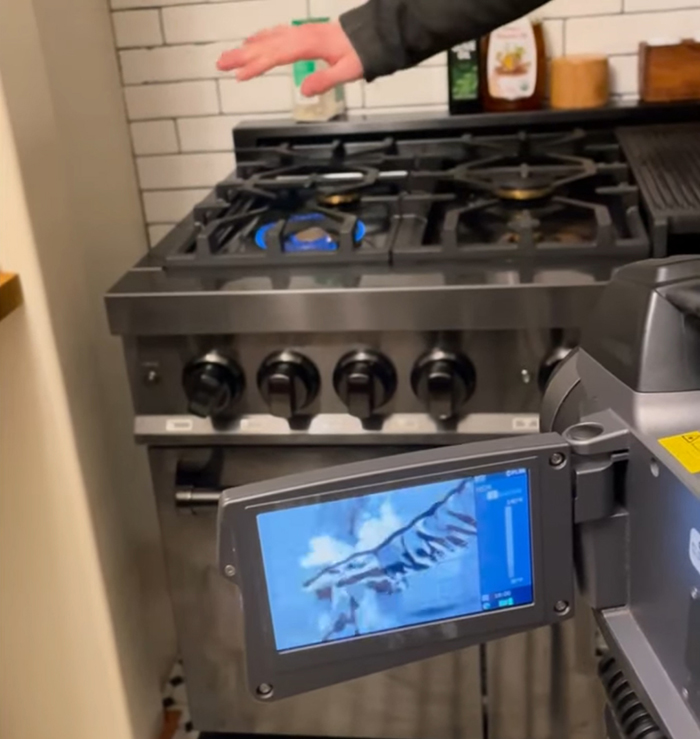Over the course of one work week, my colleagues on the Beyond Toxics Air Quality team and I visited 14 homes in Eugene and Springfield, toting a FLIR (Forward-Looking Infrared) camera and air quality monitoring equipment. We wanted to “see” what our naked eyes could not: what air toxics are being emitted from gas appliances.
Gas appliances emit two groups of pollutants of concern to us. One, appliances do not burn 100% of the natural gas going into them, and they release unburned methane, ethane, and butane, all of which contribute to global warming. Two, when natural gas is successfully burned, the previously mentioned pollutants turn into CO2, a major climate contributor, and PM 2.5, NO2, volatile organic compounds (VOCs) and other pollutants closely tied to childhood asthma and premature death in adults.
I was asked to tag along to take photos to document the process. I don’t often get to work “out in the field” with the team, so this was an exciting opportunity to work directly with the Air Quality team and learn firsthand the dangers of gas appliances.
Seeing is Believing
I was immediately taken aback by what the camera captured in the first house I visited. I didn’t know what to expect, but seeing plumes of gasses and VOCs spewing into the air was eye-opening. To be perfectly honest, I had never thought much about the use of gas in our home. As a kid, I remember when my family moved into a home with a gas stove, it felt like an upgrade. But now I’m wondering, why do we consider burning fossil fuels in our homes and polluting our indoor air to be an improvement over electricity?

The FLIR camera, often used by professionals to visualize gas leaks, reveals a plume of pollutants emerging from a preheated oven. | Photos by Emily Matlock
After visiting several homes and seeing the same toxic plumes at each, I was thankful for my electric appliances. Admittedly, I’m not much of a cook but it works just fine for my needs. By the end of the day, I had a headache, and I can only imagine it was caused by my exposure to gas and VOCs throughout the day. We simply turned on gas stoves and ovens for several minutes to capture the plumes on the FLIR camera. Imagine cooking every night for a family of four, using every burner and the oven, and inhaling the fumes for the hour or so it takes to prepare a meal.
The residents we spoke to all said similar things: I love cooking with my gas stove, but it’s not worth the risk to my health. Or, after seeing the fumes, I would switch to electric if I could.
And that’s just it, many of us don’t have the choice. My last rental home had gas appliances, but inadequate ventilation above the range. Many homeowners feel that they can’t afford to make the switch, or wouldn’t know where to start.
Choosing a Better Future
We need policy in place to ensure a climate-smart and healthy future. Eugene’s recent ordinance prohibits gas infrastructure in new, low-rise residential construction. It doesn’t take away the choice for buyers to purchase gas appliances or homes, but rather adds electrified homes that will ensure a healthier future for residents and the planet.

Our FLIR video footage reveals the presence of toxic gasses beyond the flame we can see.
The manufactured controversy of so-called “energy choice” is fraught with greenwashing from an industry that doesn’t want to lose its stronghold on a community dependent on fossil fuels. Gas industry profits are made at the expense of those of us who don’t have a choice but to pollute our homes and the environment. The gas industry touts it as “clean” and “natural,” when studies like ours with the FLIR camera clearly show high levels of pollutants and toxins entering the home.
If our study could be replicated on a larger scale, I think many Eugene residents and folks across the country would be surprised–maybe even horrified–to see plumes of unburned methane, VOCs and other toxics coming from their home appliances. Eugene’s gas ordinance is a first step, but Beyond Toxics will continue to educate and provide resources for moving toward a fossil-free future. It’s the only future that makes sense for future generations.

~ Emily Matlock,
Beyond Toxics Membership and Communications Coordinator
Read the NEW Beyond Toxics Report
Seeing is Believing: Visualizing Indoor Air Pollution from Gas Stoves (PDF)
Find out more about Building a Fossil Free Future, our climate justice campaign!


